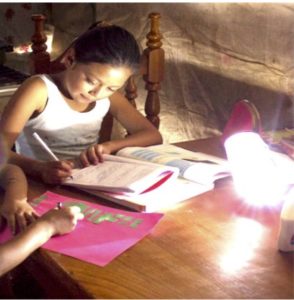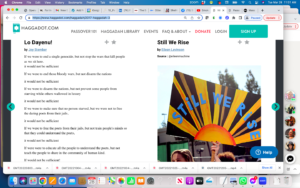Dems: DON’T be Tricked Into “Republican-Lite”!
“When they go low, we go high.”
—Michelle Obama
This week, two prominent Democrats gave opposite but equally crazy advice?
Thom Hartmann says we should open up the bag of Republican dirty tricks and start using them. And in what he calls a “daring” maneuver, Carville tells us in a New York times op-ed to “roll over and play dead.”
The above Carville link is for subscribers. I don’t have a sharing link.
Carville’s “plan” was properly shredded by Gil Duran of FrameLab, who says what I would have said: Carville is ignoring the moral issue that real people are getting hurt. Democrats have to frame themselves as the opposition, loudly and clearly; silence is complicity. And principled resistance is what creates change (more on that in the What to Do section, below)
But let ME take on Hartmann, who usually talks sense. The moral arguments are obvious, but let’s talk about the impact in practice. And then we’ll talk about what to do instead.
- This makes us no better than them. If we use the same slimy methods, voters will just say “Tweedledum and Tweedledumber” and stay home—as millions of Biden voters did this past November. Just as we don’t accept violent terrorism to redress wrongs, so we should not accept disenfranchising others And if you think the so-called “stop the steal” movement that tried to steal back the 2020 election was bad, imagine if they actually had cause!
- Republican-lite has never worked for the Dems. Republican-lite gave us the impasse under Biden when Manchin and Sinema blocked progress over and over. A generation ago, Republican-lite brought us Newt Gingrich and his “Contract with America” (which progressives dubbed “Contract ON America,” in the hitman sense).
- For decades, Republicans have been “the party of no”—and that includes “no, you can’t vote.” Denying others voting rights, even those we disagree with, would make Democrats also the party of “no, you can’t vote.” Democrats were that party in the segregated South during my childhood, and we all know by now what a huge mistake that was. Ironically, the Republicans are still criticizing the Dems for these old sins, even though, as Greg Palast notes, they themselves have taken voter suppression to new levels. But Harris had the chance to call out Republican voter suppression well in advance of the election, and according to Palast, her failure to push on this was why she lost.
In the 2024 election, failing to speak directly and meaningfully to the working class—coming across as yet another Republican-lite—led to the perception that Harris was an elitist who was beholden to corporate funders and was not in tune with white working-class people, despite policy platforms (that got little coverage) that were much more favorable to workers. Being too timid not only to beat a continuous drum calling out her opponent’s slide toward open fascism AND his cognitive decline but to mobilize an army of respected surrogates and send them into swing states to bring that message home over and over and over was a huge mistake. The country should have been flooded with messages about the harm that her opponent would do, his history of crime, and his repeated failures of competence.
Mind y0u, I think Harris also did a lot of things right, despite the truncated campaign. The focus on joy was brilliant. The promise to undo the damage of Dobbs (the Supreme Court decision that overturned Rowe v. Wade) was given full weight. The promise to be a president for all in the US, not just the Blue states, inspired many.
What to Do to Change This for Next Tuime
- We win more when we play bigger. I think the things that hurt the Harris campaign the most other than voter suppression of Democrats in Red states was her unwillingness to play big on certain issues. Being way too weak on Gaza almost certainly cost her Michigan—and was the reason multiple New Hampshire voters told me (when I knocked on their doors this fall) they weren’t voting for either presidential candidate. It would have been so easy for her to give a slot to Ruwa Romman, Palestinian-American legislator from Georgia, whose unity speech had been vetted by the Harris team. Flip-flopping her former correct opposition to fracking and barely mentioning climate change cost her many environmentalist votes. And she seldom addressed the elephant in the room of Republicans denying Democrats and poor people and people of color and people who didn’t want to catch a contagious disease the right to vote.
- We also win when we’re much more visible. There’s been a ton of grassroots organizing going on since the election—but with a few exceptions such as the Democratic legislators’ protest in front of the Treasury, it’s not showing up in the media, people don’t encounter it on their way to work, and non-activists don’t know it’s happening—because it’s been on Zoom rooms and inside houses of worship and college classrooms, and not out on the streets. This is a both-and. Do the organizing, do the lobbying, do the important but quiet stuff—but also get out there by the thousands and be seen! In my teen years, I went to a peace demonstration almost every weekend, many times boarding a charter bus from NYC to Washington to participate. Tens of thousands, sometimes hundreds of thousands, over and over again helped to bring that horrible war in Vietnam to a close. A few years earlier, the 1963 March on Washington and other massive demonstrations, plus people in the streets openly defying segregation, helped move a proud civil rights agenda forward into law, and gave LBJ the spine to back up those laws with enforcement. Even small actions can make a difference. Just 2000 people at Seabrook, New Hampshire in 1977 changed the course of US energy away from nuclear and toward renewables, when 1411 of us got arrested and held for up to two weeks. The sustained months of action at Standing Rock, opposing the Dakota Access Pipeline, started with just 200 people.
- The Dems have to combine Bernie’s anger and speaking truth to power, Kamela’s and Tim’s focus on joy, and AOC’s youthful energy and super-personable outreach that works equally well face-to-face or on video. (Note: the above link takes you to the links to all of my Facebook posts that mention her or share her work. It is open to the public; you should be able to view the videos and read the quotes even if you’re not on Facebook. If you want to pick one, go for the interview by Bernie, posted December 3, 2024.)
- As Bernie has done for years, they must focus on the class issue—not to the exclusion of its current constituencies, but intersectionally, inclusively. They have to recognize that the struggle for rights is the struggle for rights—whether those rights are denied for race, religion, gender, sexuality, economic position, class , age, ability, or any other category. This message has to be presented in ways that make all of these constituencies feel seen, heard, and valued: when one group gains, it “lifts all boats” and “makes the pie higher” for everyone; when one makes progress, it doesn’t take away from the others.
- Dems have to go to the Red states and Red audiences. Dems have to emulate Pete Buttigieg and get interviewed by MAGA media outlets like Fox—and do so as articulately and persuasively as he does. They have to reclaim populism and get in front of voters who wrongly saw the billionaire convicted-felon and serial-liar Republican candidate as populist.
- Democratic politicians have to be more outspoken. They need to cite real human tragedies resulting from these cruel policies and open hatreds by real people who’ve been hurt, name them, and tell their stories on the floor of the Senate and the House and at their Town Hall meetings back in their home districts. And they need to give copies in advance to the media and engage their base to pressure those media to show up and cover these statements.
- All of us need to widen our resistance tactics. In the pre-Internet, pre-COVID era, nonviolence scholar Gene Sharp listed 198 nonviolent social change tactics. Many more have been added since, including this list of 100 mostly digital nonviolent tactics. 21 more showed up when I searched for “nonviolent resistance techniques during covid.” And remember: governments typically fall when just 3.5 percent of the population stops complying and withdraws consent, according to research by Erica Chenoweth and Maria Stephan.
So join a group, get out there and make some of what the late civil rights icon and long-time Congressman John Lewis called “good trouble.”






